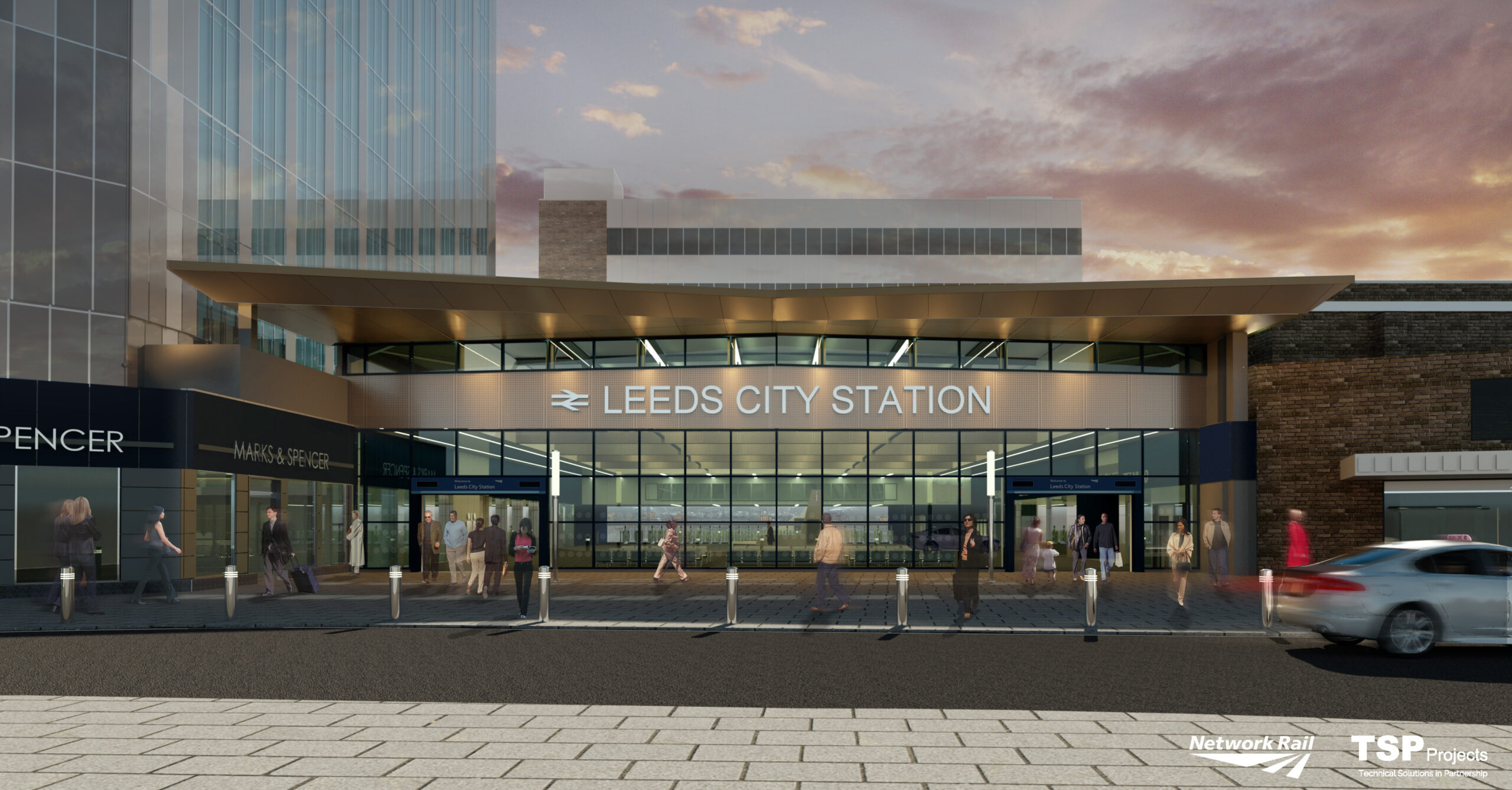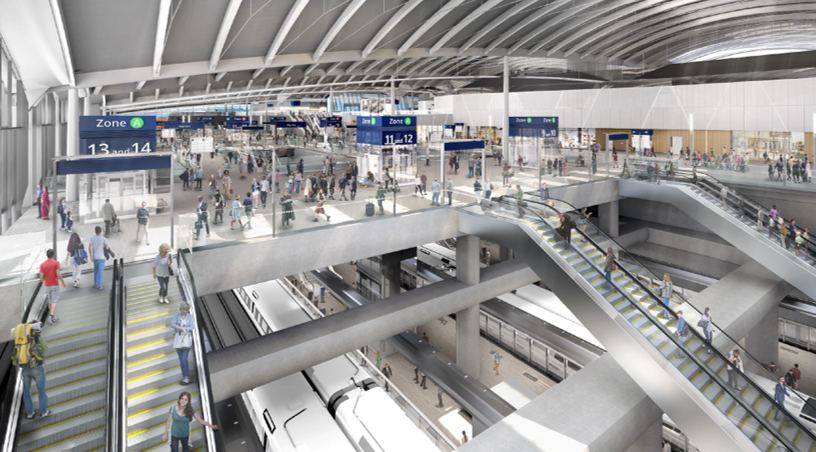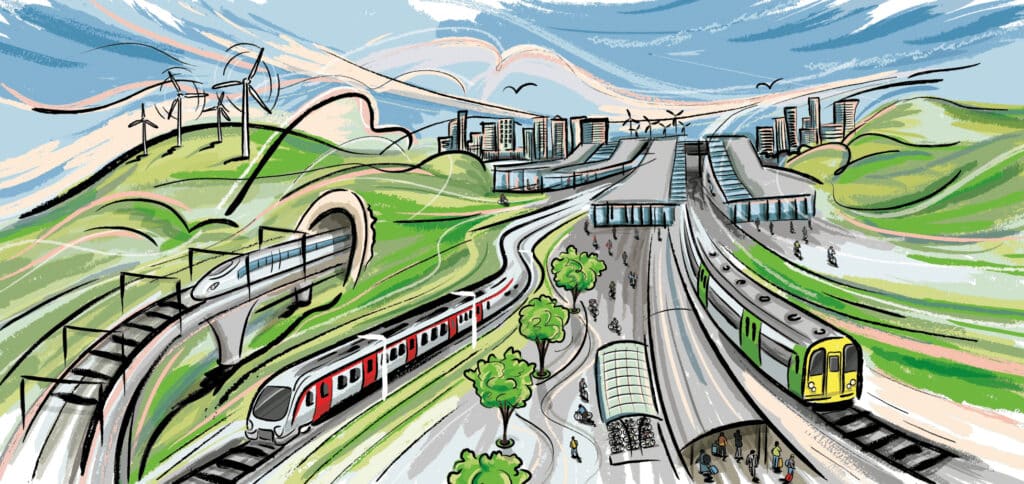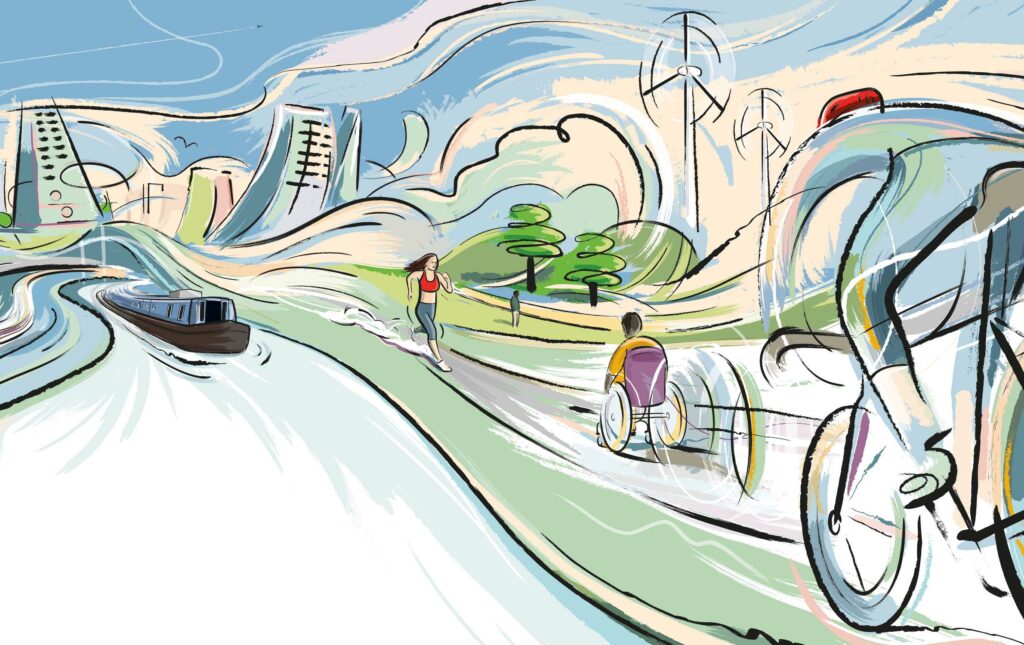SYSTRA has the multi-disciplinary expertise to support the development of vibrant, efficient and safe mobility hubs and transport interchanges – hubs that meet the needs of all users and enhance the towns and cities they serve.
Creating INTERCHANGES THAT MEET THE NEEDS OF TODAY
Transport interchanges are used by thousands of people every day. As the place where rail, bus, pedestrian and road transport modes intersect, interchanges play a vital role in enabling people to get to work, to the shops, to visit family and friends, to enjoy days out and to go on holiday. Creating functional, safe and attractive transport interchanges that meet the needs of today’s commuters and travellers is a significant challenge.
Mobility hubs need to integrate multiple modes of transport, support active travel and bring together diverse service operators, while enhancing the public realm and the visitor experience. They need to consider the needs of staff and tenants, as well as the safety and well-being of users.
SYSTRA has a broad range of experience in designing, modelling and supporting the delivery of efficient, effective and welcoming mobility hubs that add value to cities and towns, and enhance the experience for everyone using them.
At SYSTRA, we understand how to help transport operators and authorities create integrated, accessible and easy-to-use transport interchanges that meet the demands of today’s transport users, workers and local communities.
Transport interchanges need to be flexible enough to cater for people of different ages and abilities with a variety of agendas and differing activity patterns throughout the day. They need to enable commuters to move through the space quickly and intuitively, while giving leisure travellers more time to find their way, stop, wait and re-group.
Why transport interchanges matter
Interchanges are the transport gateways that enable people to get around safely and efficiently. They often provide the first glimpse of a destination for visitors. They may incorporate railway, light rail, bus and underground stations, which need to be interconnected and easy to navigate between. Interchanges also need to integrate with pedestrian and cycling networks, to encourage active travel and cater for emerging modes, such as scooters.
Further considerations in transport interchange design include commercial and retail opportunities connected to the hub, car parking provision and access, provision of wayfinding and journey-planning information, accessibility for people with sensory or mobility impairments, and integration into the wider public realm. Integrating all of this within a transport interchange creates a ‘mobility hub’, which supports a seamless user experience and provides a valuable community amenity.

Best practice in transport interchange design
Based on our experience of designing and making the case for modern transport hubs, SYSTRA has developed six best practice criteria for transport interchanges. These focus on how interchange design can encourage the use of public transport, cycling and walking – as well as supporting wider regeneration initiatives.
- Feel safe to use at all times and have well overlooked places where people are comfortable and enjoy being.
- Be accessible for all – if we design for all users, including the most vulnerable, everyone benefits.
- Be connected by legible, direct and attractive walking and cycling routes to the surrounding area.
- Exploit the potential for direct interchange with other transport modes – making it easy and attractive to get from the train to light rail or the bus.
- Be located to make the most of local assets and amenities – opening the door to key leisure, employment and community opportunities.
- Be attractive places that make the most of local development opportunities and create a sense of place and arrival.
Maximising the social and economic value of transport interchanges
By recognising the wider role of transport interchanges, and the areas around them, our transport sector specialists ensure that we get the functional aspects of interchange design and delivery right, but also that we shape them to maximise economic and social opportunities.
By approaching mobility hub design with this wider context in mind, we ensure they play a key role in creating more accessible, inclusive and attractive towns and cities where people want to live and work. If we get this right, mobility hubs can be a catalyst for economic growth, quality of life enhancement and improved employment opportunities in our urban areas.
Transport interchange design and consultancy services
At SYSTRA, we are committed to making this happen for transport interchanges and other transport investments – helping to shape travel and transport in cities and towns in ways that create places that people will enjoy. We offer a range of services to help towns and cities create these future-focused transport interchanges:

areas of expertise
We offer a range of services to help towns and cities create these future-focused transport interchanges:
- Advice on mobility hubs – location, typology, active travel access, adding social value.
- Optioneering – in-depth consideration of alternatives to identify the best solutions.
- Concept design – looking at feasibility, considering materials and how the solution meets the needs of end users.
- Detail design – considering both architecture and layout.
- Pedestrian modelling.
- Rail passenger demand forecasting.
- Capacity assessment.
- Smart ticketing & Intelligent Transport Systems (ITS) integration.
- Funding bid preparation – including stakeholder engagement.
- Business case preparation – including modelling, forecasting and appraisal.
How can our experts help?

Find out what its like to work at SYSTRA, rewards, benefits and about different career pathways including apprenticeships and graduate opportunities.
 Australia
Australia  Brazil
Brazil  Canada
Canada  China
China  Denmark
Denmark  France
France  India
India  Indonesia
Indonesia  Ireland
Ireland  Italy
Italy  Malaysia
Malaysia  New Zealand
New Zealand  Norway
Norway  Poland
Poland  Saudi Arabia
Saudi Arabia  Singapore
Singapore  South Korea
South Korea  Sweden
Sweden  Taiwan
Taiwan  Thailand
Thailand  United States
United States  Vietnam
Vietnam 

